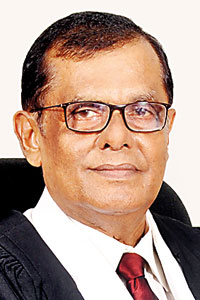Education in 2020
View(s):Arrival of the much awaited 2020 almost coincides with the completion of 20 years of excellent service to the nation by Vidura College – Colombo. From its very humble beginning, Vidura has become a veritable giant among the learning educational institutions in Sri Lanka, maintaining its unique blend of Sri Lankan curriculum, education in the English medium and intrinsically national mode of thinking and values system. It is not an exaggeration to say that Vidura has redirected the education system in Sri Lanka, giving it a new dimension.

Somabandhu Kodikara (B.Sc., Post Graduate Dip. in Edu., IDEPA) Principal (Primary School) Vidura College - Colombo
To understand the pivotal role played by Vidura in the system of education in Sri Lanka, it is necessary to put it in to perspective of the historical development and emergence of the pre and post-colonial state.
No article on education in Sri Lanka is complete without a word of gratitude to late Dr. C.W.W. Kannangara who opened the doors of learning to the people, with his policy of Freedom in Education. (Free Education as it is popularly labelled today is a misnomer).
The second most significant event in education in Sri Lanka was the introduction of Swabhasha to teach Science as a result of the ultra-nationalistic policies of late S.W.R.D.Bandaranaike. Though it was a political decision embroiled in the national struggle, anti-elitism and resurgence of the lower middle class, and was romanticised by the politically anti-imperialist camp, it opened up the highly priced Science education to the people. Undoubtedly it was the need of the day.
The one failing that this new bold, courageous and essentially progressive decision had, was that it turned the table upside down by discarding English outright, considering it as a weapon of the colonial past. It was a case of throwing the baby with the bath water. The positive development in the system soon succumbed to the ill-effects of this one tragic mistake.
On the contrary, the Indian statesmen, who were fiercely nationalist politicians in comparison to their Sri Lankan counterparts, decided to continue education in English in the Federal School system while converting to Swabhasha in the State School system. This gave the Indian nation a head start with great advantages and benefits compared to Sri Lanka. India today is a giant in the fields of scientific research, development in Information Technology, agriculture etc. and stands as an economic entity to be reckoned with, not just because of its size in comparison to Sri Lanka.
Hence, in the current context, it has become mandatory to do away with the inward focussed policies especially with regard to the medium of instruction in primary and secondary education. It is no more a political slogan but a fact of life. Sri Lanka has to emerge as a developed nation or perish under the dictates of self-seeking world economic super powers.
Vidura played its vital role as a far sighted institution by stepping in to the vacuum against all odds twenty years ago. On the one hand was the well-established government school system with the peripheral associates of privately managed missionary schools, and a couple of private schools following the Sri Lankan National Curriculum teaching in the Sinhala (and Tamil) medium. On the other hand, was the fast emerging genuine as well as quasi ‘International Schools’ supposed to be following the English National Curriculum in the English medium. (The majority of these International Schools do not follow ENC in the Primary and lower secondary sections but are only using text books in English available in the market).
Though the reputed International Schools among the lot used a time tested and globally accepted curriculum, the products, to a large extent, were alienated from the national identity of the country to varying degrees. Though the popular slogan is ‘Think locally and act globally’, in reality it is a case of ‘Body in Sri Lanka and mind in the West’ situation.
The main problem faced by the products of the mainstream government schools was that they were gradually, but decidedly, losing out to the products of International Schools. The problem was very evident but the solution was not. The country was expecting a solution that would retain the national fervour, but would give the fruits of global development to the children of Sri Lanka.
Vidura took the lead by introducing the Sri Lankan National Curriculum in the English medium in all Grades from the Infants’ Group to Grade 13. Twenty years ago this was a challenge with almost insurmountable pit falls and pot holes. With a crystal clear vision and steel like determination, the founders of the school forged ahead, not comfortably on a treaded path, but inventing the path itself.
Twenty years later, Vidura has proved that it has kept to the ideals of its Founders in instilling national thinking, religious fervour and cultural heritage and consciousness in its products. The students of Vidura continue to excel in every sphere and shine as worthy global citizens while maintaining their Sri Lankan identity with pride.


